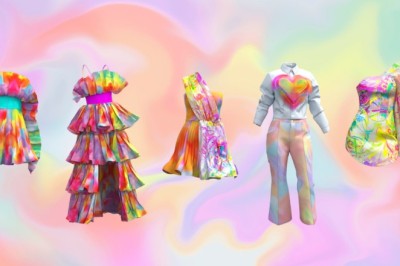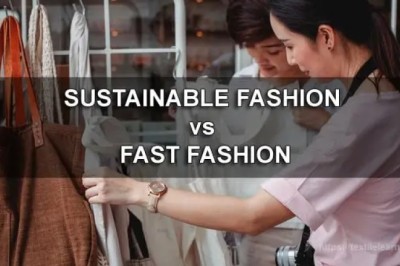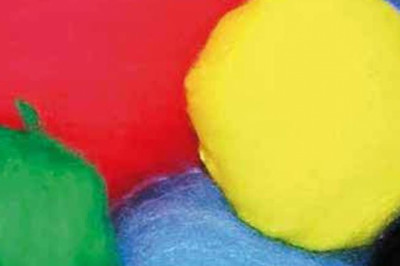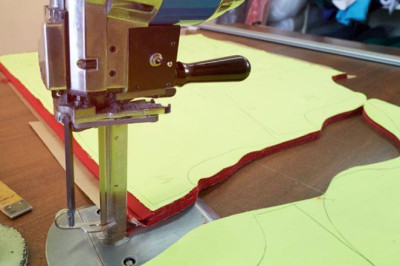views

The practice of buying used or pre-owned goods, frequently from thrift shops or internet marketplaces, is referred to as secondhand shopping. Due to the economic, environmental, and social advantages of this trend, it has become more and more popular in recent years. It not only offers excellent financial savings, but it also lessens waste and advances sustainability. Additionally helping local companies, secondhand shopping can be a fun and interesting method to find one-of-a-kind products.
This article's objectives are to examine the thrift store trend and offer readers advice and guidance on how to successfully adopt secondhand shopping. We wish to persuade more people to think about this budget-friendly and eco-friendly shopping choice by emphasizing its advantages and offering helpful guidance.
The Thrift Store Trend
More and more individuals are choosing to shop at thrift stores rather than buying brand-new products, which has helped the thrift store trend gain popularity in recent years. Renewed interest in vintage and retro clothes, rising environmental awareness, and a desire to conserve money are all characteristics of this trend.
The growing understanding of how rapid fashion has a negative influence on the environment is one of the main drivers of the thrift store movement. The term "fast fashion" describes the mass fabrication of clothing that is intended to be worn only briefly before being discarded. By purchasing used goods, consumers may lessen the demand for new apparel and contribute to reducing the quantity of textile waste that ends up in landfills.
The desire for distinctive and one-of-a-kind things is another factor contributing to the thrift store trend. Many secondhand shops have a large selection of vintage and retro goods that are unavailable in regular retail stores. This has resulted in a resurgence of interest in vintage clothing and a greater respect for historical fashion.
The thrift store concept has gained popularity since it provides more economical options for purchasing, to wrap things up. Because used things are frequently substantially less expensive than new ones, even those on a low budget can buy high-quality apparel and other items. In general, people are embracing the thrift store trend as a method to save money and shopping has become a popular and sustainable activity.
see also- Fashion as a Tool for Social Change: Empowering Women and Supporting Communities
Benefits Of Secondhand Shopping
-
Economic Benefits
Purchasing used goods is frequently considerably more economical than doing so for brand-new ones. Numerous thrift shops provide high-quality clothing, furniture, and other products at substantially lower costs than conventional retail stores. This implies that those on a restricted budget can still find high-quality goods without going overboard. Additionally, buying used items is a terrific method to cut costs and save money.
-
Environmental Benefits
Shopping secondhand saves resources since less rubbish ends up in landfills. You save something from being thrown away by purchasing used goods. This may help to lower the demand for new products, which may lower the number of resources required to make them.
-
Social Benefits
Additionally, buying used has positive social effects. Shopping at a thrift store can be a method to assist charities and other nonprofit organizations since many of them are run by them. Additionally, shopping secondhand can be enjoyable and social.
Spending time with friends or family while seeking unusual and fascinating goods might be an opportunity. Finally, by supporting neighborhood businesses and lowering the amount of garbage generated by the community, secondhand shopping can assist to foster a sense of community.
Tips For Successful Secondhand Shopping
-
Set a Budget
The key to effective secondhand shopping is to establish a budget. Determine how much you are willing to spend before going shopping. By doing this, you may prevent overspending and make sure that you only buy things that you can afford. Additionally, it's a good idea to monitor your spending while you shop to ensure that you stay under your spending limit. With a set spending limit in mind, you can concentrate on locating the greatest offers and maximizing your shopping experience.
-
Know What to Look For
Knowing what to look for is crucial for secondhand buying success. This calls for having a clear understanding of the goods you're looking to get as well as your preferred brands and fashions. It's also beneficial to be aware of current fashion trends and how to work them into your sense of style. Finding the things that best suit your requirements and preferences in a thrift store or consignment shop may be done quickly and efficiently if you know what to search for.
-
Check for Quality
To receive good value for your money when buying used things, it is crucial to inspect the quality. Consider purchasing things that are strong and have not suffered any damage or wear and tear. Make that the buttons, zippers, and seams are all in good functioning order by giving them a close look. Smells, stains, and holes should all be looked for in clothing. You can avoid investing in products that are not worthwhile and won't last very long by taking the time to carefully evaluate them for quality.
-
Shop Often
To shop frequently is one of the most important rules for effective secondhand shopping. To locate the finest discounts and the most unusual goods, it's essential to often visit thrift shops and secondhand shops since they continuously receive new merchandise. Shopping frequently increases your likelihood of discovering something that appeals to you and suits your style.
Additionally, frequent shopping might assist you in familiarizing yourself with the stock and layout of the store, making it simpler to traverse and find what you're looking for. So make it a routine to frequent the second-hand stores and thrift shops in your area to find new treasures.
-
Be Open-Minded
The secret to effective secondhand shopping is to keep an open mind. It's crucial to keep an open mind and be willing to explore different sections of the store because thrift stores frequently feature a large variety of products that are always changing. You never know what hidden gems you might uncover!
Additionally, keeping an open mind about styles and sizes might result in some fantastic discoveries. Try on items that might not be your typical style or size; you might be pleasantly surprised by how it looks and fits.
see also- How to dress sustainably like Emma Watson
Final Words
In conclusion, shopping secondhand has several advantages, including social, environmental, and economic ones. People can limit their trash, make financial savings, and support their local communities by shopping at thrift stores and other secondhand outlets.
Growing concern about the environment, a desire for one-of-a-kind things, and the affordability of secondhand shopping have all contributed to the popularity of thrift stores.
With more and more individuals adopting this economical and environmentally friendly method of buying, the future of used goods is promising. The market for used goods is projected to increase as customers become more conscious of the damaging effects of rapid fashion on the environment.











Comments
0 comment